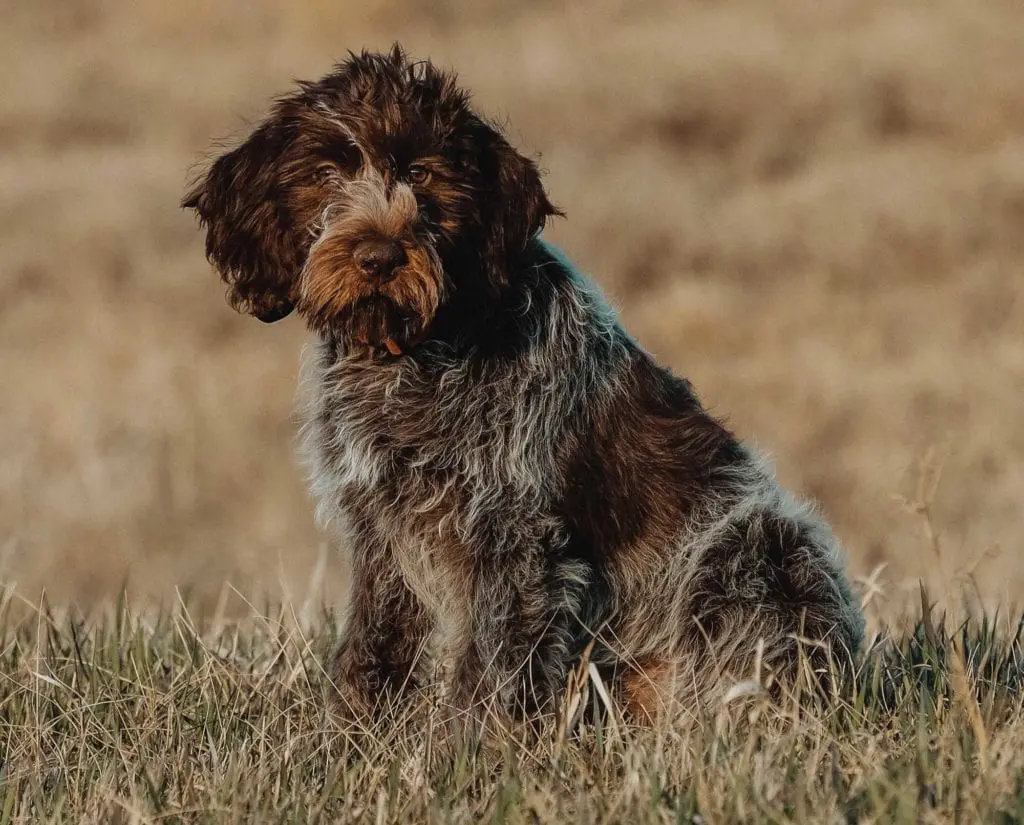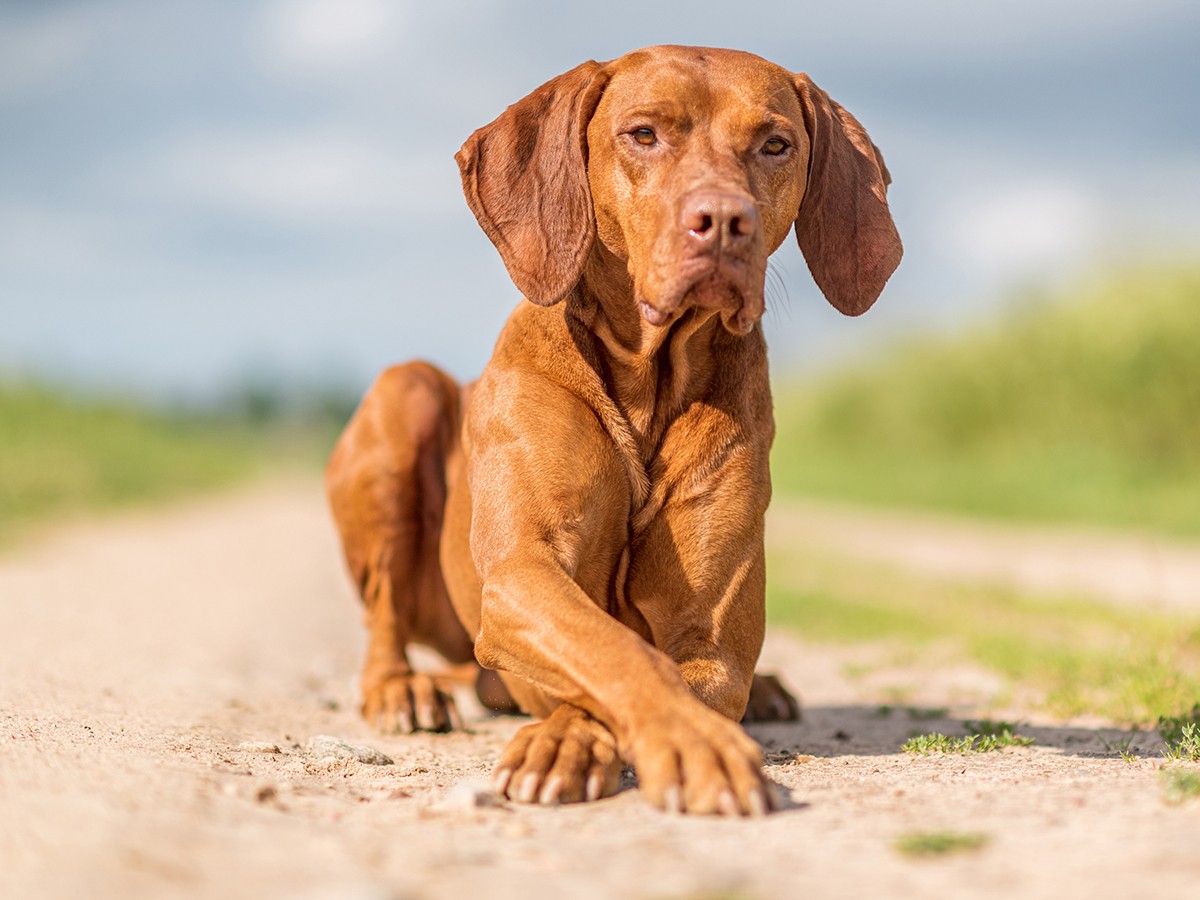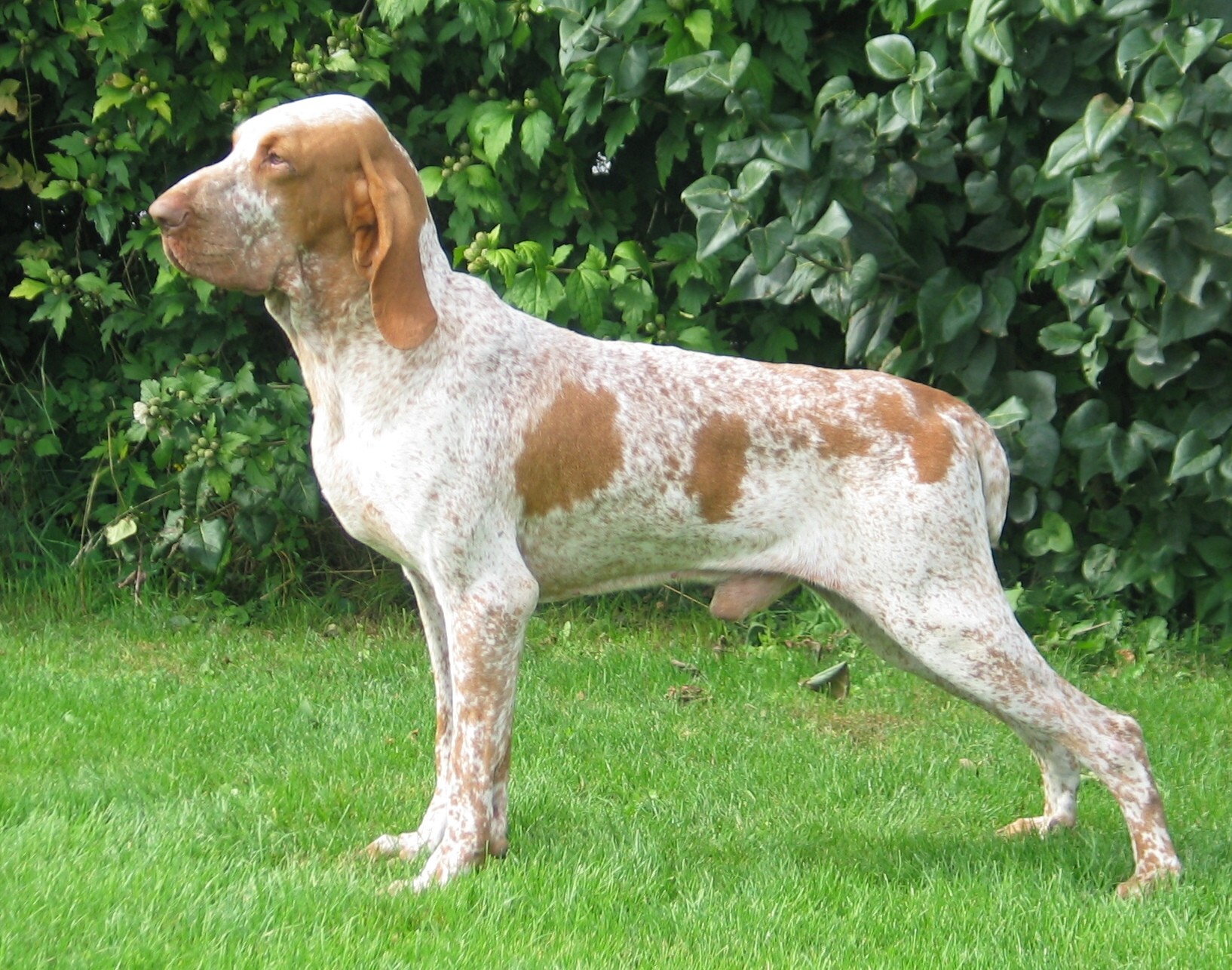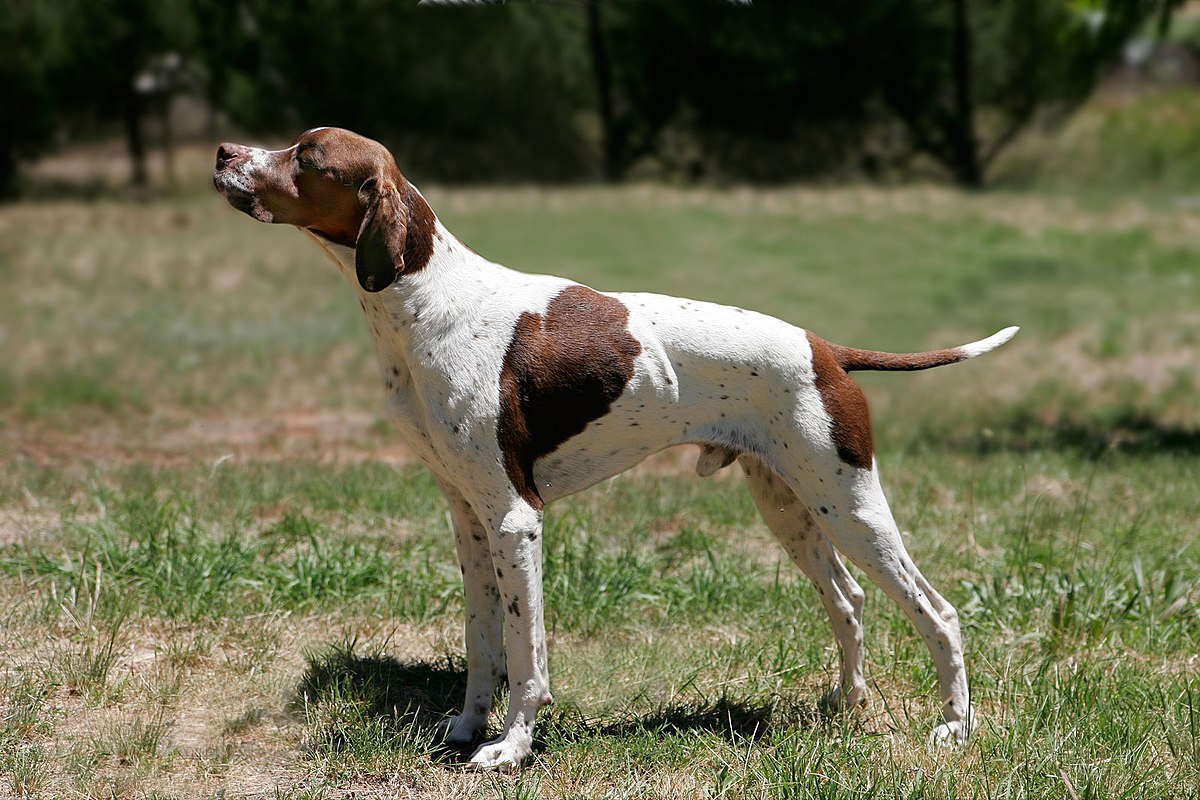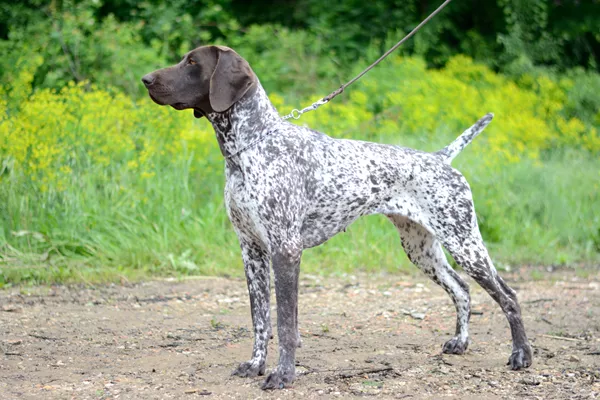Welcome to pawtrix.wiki, your one-stop location for everything about dogs! Today, we’re exploring one of the sporting world’s most distinctive and versatile breeds – the Wirehaired Pointing Griffon. Often called the “supreme gun dog” or the “gentleman’s hunting dog,” these shaggy athletes combine remarkable hunting skills with devoted companionship.
The Versatile Hunting Companion
While many hunting breeds specialize in one particular task, the Wirehaired Pointing Griffon was meticulously developed to excel at multiple hunting disciplines. These dogs can:
- Point game birds with precision and control
- Track wounded animals with determination
- Retrieve from land and water with equal enthusiasm
- Work in varying terrains from dense forests to marshlands
- Hunt in diverse weather conditions thanks to their protective coat
Their all-around versatility makes them popular among hunters who need a single dog capable of handling different hunting scenarios throughout the seasons.
Origins: A Dutchman’s Dream Dog
The Wirehaired Pointing Griffon’s story begins with one passionate man’s vision for the perfect hunting companion. Eduard Karel Korthals, a Dutch sportsman living in Germany in the late 1800s, set out to create what he called a “supreme gun dog” – one with exceptional versatility, trainability, and close working relationship with hunters.
Beginning around 1874, Korthals selectively bred various sporting dogs, including:
- German pointers for their hunting abilities
- French pointers for their methodical style
- Various griffon-type dogs for their wire coats
- Spaniels and setters for their excellent noses
By carefully selecting for both physical traits and temperament, Korthals eventually produced a consistent type of dog that excelled in multiple hunting environments. The breed standard was established in 1887, and the dogs quickly gained popularity among European sportsmen.
The Wirehaired Pointing Griffon was recognized by the American Kennel Club in 1887, though they remain less common in the United States than many other sporting breeds. Today, dedicated enthusiasts continue to preserve the working abilities and distinctive temperament that Korthals envisioned.
Distinctive Appearance: Form Follows Function
The Wirehaired Pointing Griffon’s appearance clearly reflects its working heritage:
Size and Structure
- Males: 22-24 inches at the shoulder, 50-70 pounds
- Females: 20-22 inches at the shoulder, 45-60 pounds
- Build: Medium-sized with substantial bone and muscle
- Proportions: Slightly longer than tall
- Movement: Efficient, ground-covering gait built for endurance
The Trademark Coat
Their most distinctive feature is the harsh, medium-length coat that gives the breed its name:
- Texture: Harsh and wiry outer coat with dense, insulating undercoat
- Appearance: Straight but never silky or woolly
- Colors: Steel gray with brown markings, brown, brown and white, orange and white, or roan
- Facial features: Pronounced eyebrows, mustache, and beard
This weather-resistant coat serves critical purposes:
- Protects against cold water (these dogs love to swim)
- Shields from thorns, brush, and rough terrain
- Provides insulation in varied weather conditions
- Resists collecting burrs and debris during hunts
Facial Features
The face reveals both intelligence and character:
- Medium-length muzzle with distinctive facial furnishings
- Intelligent, human-like expression with earnest eyes
- Medium-sized ears that hang close to the head
- Overall appearance often described as “honest” and “rustic”
Temperament: The Devoted Partner
Wirehaired Pointing Griffons are known for their exceptional combination of working ability and companionship:
In the Field
When hunting, they display:
- Methodical, thoughtful hunting patterns
- Excellent scenting ability
- Reliable pointing instinct
- Strong retrieving desire
- Determination in difficult conditions
- Close working range to the hunter
At Home
As family companions, they are:
- Deeply devoted to their people
- Gentle with children
- Eager to please
- Adaptable to family routines
- Less hyperactive than some sporting breeds
- Natural watchdogs without aggression
The “Velcro Dog” Syndrome
One of the most defining characteristics of the breed is their intense desire to be with their people. Many owners describe them as “velcro dogs” who:
- Follow family members from room to room
- Prefer to be touching or near their humans at all times
- Can suffer from separation anxiety if left alone too long
- Form extraordinarily strong bonds with their families
This close connection is actually by design – Korthals specifically bred these dogs to work in partnership with hunters, creating a dog that constantly checks in and maintains connection with its handler.
Training and Exercise: The Willing Student
Training a Wirehaired Pointing Griffon leverages their natural intelligence and desire to please:
Training Approach
These dogs respond best to:
- Consistent, positive methods
- Clear boundaries and expectations
- Tasks that engage their intelligence
- Training that incorporates their hunting instincts
- Gentle correction rather than harsh treatment
Unlike some hunting breeds that can be stubborn or independent, Griffons typically want to cooperate with their handlers. They do, however, need regular mental challenges to prevent boredom.
Exercise Requirements
While energetic, their exercise needs are somewhat more moderate than some sporting breeds:
- Daily needs: 45-60 minutes of active exercise
- Variety: Walking, running, swimming, retrieving games
- Mental stimulation: Training, puzzle toys, scent games
- Hunting outlet: Field training beneficial but not essential
Without adequate physical and mental exercise, Griffons may become:
- Restless and potentially destructive
- More likely to develop behavior problems
- Unhappy and unfulfilled
Health and Longevity: Built to Last
Wirehaired Pointing Griffons are generally healthy dogs with a life expectancy of 12-14 years. Their sensible breeding for function rather than extreme features contributes to their overall hardiness.
Common Health Considerations
Health issues to be aware of include:
- Hip dysplasia
- Elbow dysplasia
- Eye disorders
- Otitis externa (ear infections)
- Gastric torsion (bloat)
- Progressive retinal atrophy
Preventative Care
Responsible ownership includes:
- Regular veterinary check-ups
- Maintaining appropriate weight
- Monitoring ears, especially after swimming
- Proper dental care
- Quality nutrition
- Hip and eye screening for breeding stock
The Unique Coat: Grooming Requirements
The distinctive wire coat requires specific maintenance to retain its protective qualities:
Regular Maintenance
- Weekly brushing to prevent matting
- Special attention to beard and leg feathering
- Regular ear cleaning (especially for water-loving dogs)
- Occasional trimming around eyes and sanitary areas
- Hand-stripping or plucking dead hair rather than clipping
The Hand-Stripping Difference
Unlike many breeds where clipping or scissoring is standard, the Griffon’s coat should ideally be hand-stripped (plucking out dead hair) to maintain its proper texture. Clipping will:
- Soften the coat over time
- Reduce its weather resistance
- Alter the distinctive appearance
- Potentially increase shedding
Many owners learn to hand-strip their dogs’ coats themselves, while others seek professional groomers familiar with wire-coated breeds.
Family Compatibility: The Ideal Home
Wirehaired Pointing Griffons can excel in various family situations:
With Children
- Naturally gentle and patient
- Protective without aggression
- Energy level matches well with active children
- Tolerant of handling and commotion
- Form strong bonds with “their” kids
With Other Pets
- Generally good with other dogs
- Can learn to live with cats, especially with early socialization
- May have prey drive toward smaller pets
- Benefit from proper introductions and training
Home Environment
They adapt well to different living situations provided their exercise and companionship needs are met:
- Rural properties: Thrive with space to explore
- Suburban homes: Do well with fenced yards and daily walks
- Urban settings: Can adapt with sufficient exercise outlets
- Climate adaptability: Their coat provides protection in various weather
The most important environmental factor is not space but human interaction – these dogs need to be included in family activities rather than left alone for long periods.
The Working Griffon: Beyond Hunting
While hunting remains their traditional purpose, today’s Griffons excel in numerous activities:
Dog Sports
- Field trials and hunt tests
- Agility competitions
- Dock diving
- Nose work and scent detection
- Obedience and rally
- Tracking competitions
Service Roles
With their intelligence and trainability, properly selected Griffons can serve as:
- Therapy dogs (their gentle nature is ideal)
- Service dogs for specific applications
- Search and rescue workers
- Detection dogs for various substances
Griffon vs. Similar Breeds: Making Comparisons
How do Wirehaired Pointing Griffons compare to similar sporting breeds?
Griffon vs. German Wirehaired Pointer
- Both versatile hunting dogs with wire coats
- Griffons typically more people-oriented and “softer” in temperament
- GWPs often more independent and assertive
- Griffons generally better for first-time sporting dog owners
Griffon vs. Spinone Italiano
- Both have shaggy appearances and versatile hunting abilities
- Spinones typically larger and more independent
- Griffons often more trainable and eager to please
- Both excellent family dogs with proper exercise
Griffon vs. Pudelpointer
- Similar versatile hunting heritage
- Pudelpointers often more intense in the field
- Griffons typically more openly affectionate
- Both excellent water retrievers
Finding Your Griffon: Making the Right Match
If you’re considering adding a Wirehaired Pointing Griffon to your family, you have two primary options:
Responsible Breeders
Look for:
- Health testing (hips, elbows, eyes)
- Working ability or hunting test titles
- Temperament screening
- Proper socialization practices
- Ongoing support throughout the dog’s life
Questions to ask potential breeders:
- How are the puppies socialized?
- What health tests do you perform?
- Do you hunt with your dogs or participate in field events?
- What is the temperament of the parents?
- What support do you provide after purchase?
Griffon Rescue
Consider rescue when:
- You’re open to an adult dog
- You understand potential adjustment periods
- You’re prepared for possible behavioral challenges
- You want to provide a second chance
While less common in rescue than many popular breeds, Griffons occasionally need rehoming when owners cannot meet their exercise or companionship needs.
Is a Griffon Right for You?
The Wirehaired Pointing Griffon is an exceptional breed but not suited for every household. Consider a Griffon if:
- You want an active but not hyperactive sporting dog
- You can provide daily exercise and companionship
- You appreciate a dog that forms strong family bonds
- You enjoy training an intelligent, cooperative dog
- You’re interested in hunting or dog sports
- You don’t mind some grooming requirements
Consider another breed if:
- You work long hours away from home
- You cannot provide regular exercise
- You want a dog that’s immediately friendly with strangers
- You prefer a wash-and-wear coat
- You want a completely independent dog
Living the Griffon Life: Owner Perspectives
Experienced Griffon owners consistently report both challenges and rewards:
The Challenges
- “The velcro tendency means they’re always underfoot.”
- “Their beard collects water, food, and debris regularly.”
- “Separation anxiety can be an issue if they’re left alone too long.”
- “Finding groomers who understand hand-stripping can be difficult.”
The Rewards
- “No dog is more devoted to their family.”
- “Their hunting abilities are impressive even without formal training.”
- “They have an almost human-like awareness of your emotions.”
- “They’re excellent with children and incredibly patient.”
Conclusion: The Thinking Person’s Sporting Dog
The Wirehaired Pointing Griffon represents a remarkable balance of hunting ability, trainability, and family devotion. For active owners seeking a versatile sporting dog with a distinctive appearance and affectionate nature, few breeds offer such a complete package.
From Eduard Korthals’ vision in the 1800s to today’s devoted breed enthusiasts, the Griffon continues to embody the ideal of a “supreme gun dog” that excels in both field and home. Their distinctive appearance, moderate exercise needs (compared to some sporting breeds), and deeply devoted temperament have earned them passionate admirers around the world.
At pawtrix.wiki, we believe in matching the right dog with the right home. For those with the lifestyle and commitment to meet their needs, the Wirehaired Pointing Griffon offers a partnership of loyalty, versatility, and joy that few other breeds can match.
Whether pursuing hunting adventures, competitive success, or simply enjoying life with a remarkable canine companion, the Wirehaired Pointing Griffon stands ready as the ultimate gentleman’s sporting dog – a title they’ve proudly carried for over a century.
